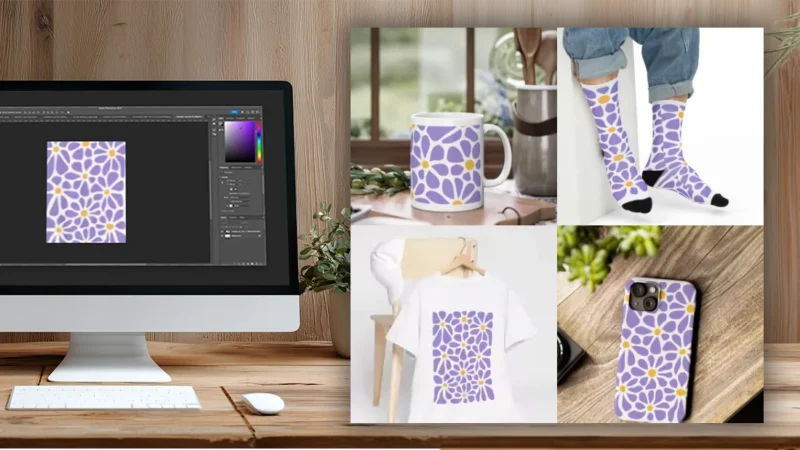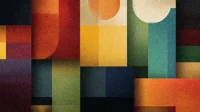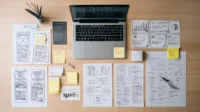In this article:
- What Is Print-On-Demand?
- Why It Works for Designers
- Step 1: Choose a Niche You Care About
- Step 2: Design with Print-On-Demand in Mind
- Step 3: Select the Right Print-On-Demand Platform
- Step 4: Build and Optimize Your Store
- Step 5: Market and Promote Effectively
- Step 6: Provide an Excellent Customer Experience
- Step 7: Track Performance and Optimize
- Step 8: Scale Strategically
- Common Mistakes to Avoid
- Turning Creative Projects into Passive Income
- Why Print-On-Demand Appeals to Designers
- Final Thoughts
- Frequently Asked Questions
Print-on-Demand (POD) enables designers to turn creative side projects into income without managing inventory, packaging, or shipping.
It is a business model that allows you to sell art, illustrations, or typography as physical products while focusing on design instead of logistics.
What Is Print-On-Demand?
Print-on-Demand is an ecommerce fulfillment model where products are made only after a customer orders.
Designers upload artwork to a platform such as Printful clothing, Printify pop-up store, or Gelato, to choose products like canvas tote bags, t-shirts, mugs, or posters, and the provider prints, packages, and ships each order automatically.
Why It Works for Designers
- No need to buy or store inventory.
- Low startup costs with minimal risk.
- Freedom to experiment with ideas before scaling.
- Potential for consistent, long-term income alongside client work.
The global print-on-demand market surpassed six billion dollars in 2024 as consumers increasingly buy personalized, design-driven products.
Step 1: Choose a Niche You Care About
The most successful POD stores focus on a defined niche. A focused concept attracts a loyal audience and communicates authenticity.
Examples of effective niches include minimalist typography for designers, vintage artwork for collectors, or botanical illustrations for nature enthusiasts.

Get 300+ Fonts for FREE
Enter your email to download our 100% free "Font Lover's Bundle". For commercial & personal use. No royalties. No fees. No attribution. 100% free to use anywhere.
Use marketplaces such as Etsy or Redbubble to identify popular categories, spot gaps, and evaluate demand.
Start with a small, curated selection that reflects your signature style.
Step 2: Design with Print-On-Demand in Mind
Designing for print-on-demand requires adapting to physical products and specific print methods.
Design Best Practices
- Use 300 DPI or vector graphics for sharp results.
- Work in RGB color mode, as used by most POD services.
- Keep vital elements inside safe margins to prevent cropping.
- Choose strong contrast and simple compositions for visibility.
- Test each design using mockup tools such as Canva, Photoshop, or Figma.
Create designs that connect emotionally. You are not only offering a product but sharing a piece of creative identity.
Step 3: Select the Right Print-On-Demand Platform
Each platform differs in product range, quality, and integrations. Compare options carefully before committing.
| Platform | Best For | Key Advantage |
|---|---|---|
| Printful | Professional brands | High print quality and Shopify integration |
| Printify | Cost-conscious sellers | Multiple print providers and pricing flexibility |
| Gelato | Global creators | Eco-friendly fulfillment and worldwide reach |
Order product samples before listing to confirm quality and color accuracy. Evaluate each service for shipping cost, delivery time, and available branding options.
Step 4: Build and Optimize Your Store
Your store represents your brand. Whether hosted on Shopify, Etsy, or your own website, clarity and design quality influence sales.
Store Essentials
- High-resolution photos and mockups.
- Concise titles with relevant keywords.
- Descriptions that explain your design concept.
- Accurate sizing and shipping details.
- Keywords such as “minimal wall art” or “creative typography shirt” integrated naturally.
Announce your store launch on platforms where visual audiences gather, such as Instagram, Pinterest, and Behance.
Step 5: Market and Promote Effectively
Marketing converts designs into sales. Build visibility and community through consistent communication and storytelling.
Marketing Strategies
- Share your design process through short-form videos.
- Build an email list to notify followers of new releases.
- Collaborate with other artists or small brands.
- Publish content about design and creativity to build SEO authority.
- Plan seasonal campaigns for holidays or special events.
Seasonal collections, such as holiday posters or themed apparel, can significantly increase sales volume during key retail periods.
Step 6: Provide an Excellent Customer Experience
While the printing platform handles logistics, you are still responsible for the customer relationship.
Customer Experience Checklist
- Test sample orders for quality assurance.
- Follow up with customers to encourage reviews.
- Respond promptly to questions or complaints.
- Include a thank-you note or bonus file to personalize the experience.
Consistent, positive communication builds long-term trust and loyalty.
Step 7: Track Performance and Optimize
Treat your print-on-demand business as a data-informed creative project.
Monitor:
- Best-selling designs and categories.
- Traffic sources and referral patterns.
- Conversion rates and customer feedback.
If one product performs well, expand on that concept rather than starting entirely new ones. Incremental improvement produces sustainable growth.
Step 8: Scale Strategically
Scale your business once you achieve consistent sales and reliable fulfillment.
Sustainable Scaling Methods
- Add product variations or complementary items.
- License artwork for royalties and passive income.
- Join additional marketplaces such as Society6 or Amazon Merch.
- Collaborate with niche influencers or microbrands.
Intentional scaling maintains brand quality and ensures long-term success.
Common Mistakes to Avoid
- Launching too many products too soon.
- Skipping print and quality checks.
- Ignoring marketing or SEO.
- Underestimating shipping times.
- Inconsistent branding across listings and visuals.
Focus on fewer, better designs and refine based on results.
Turning Creative Projects into Passive Income
Once your store runs smoothly, print-on-demand can produce semi-passive income.
For example, a single design that sells fifty units per month at ten dollars profit generates five hundred dollars monthly. A few strong designs can build a steady income stream while strengthening your portfolio and creative reputation.
Why Print-On-Demand Appeals to Designers
Print-on-Demand merges creative freedom with financial opportunity. Designers can showcase personal style, reach a global audience, and earn income without managing logistics.
Approach it with professionalism, track your data, and keep improving. A small side project can become a lasting creative business.
Final Thoughts
Print-on-Demand is one of the most practical ways for designers to monetize their creativity. It rewards focus, patience, and continuous learning.
Start with one design and one platform, refine your process, and build momentum. Seeing your artwork on real products confirms that creativity can produce both beauty and independence.
Frequently Asked Questions
Q: How much does it cost to start a print-on-demand store?
A: Most designers start for under one hundred dollars, including platform fees and sample orders.
Q: Which print-on-demand platform is best for beginners?
A: There is no single best platform. The right choice depends on your products, location, and integration needs. Take time to research, compare features, and order samples before deciding which platform works best for you.
Q: Can print-on-demand become a full-time income source?
A: Yes. Many designers build full-time income by refining their niche, improving product presentation, and expanding through strategic marketing.





